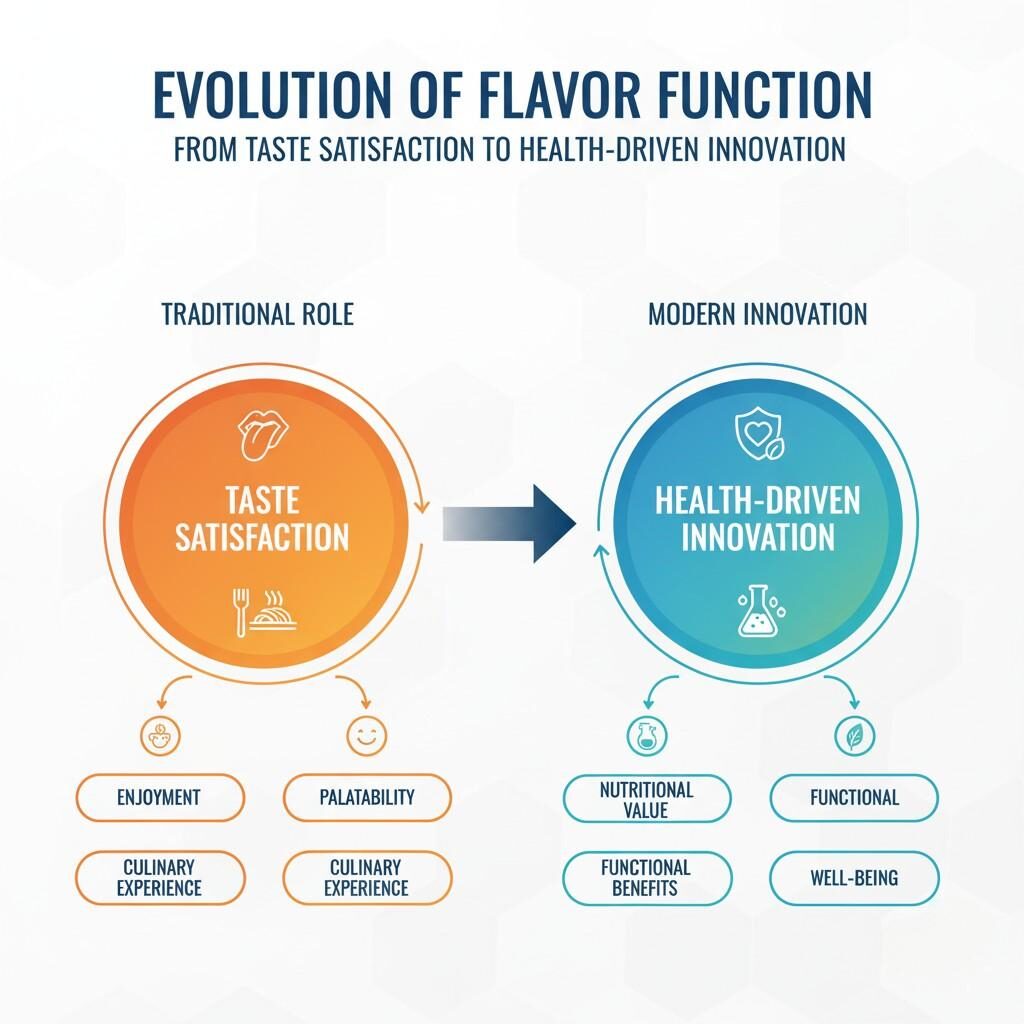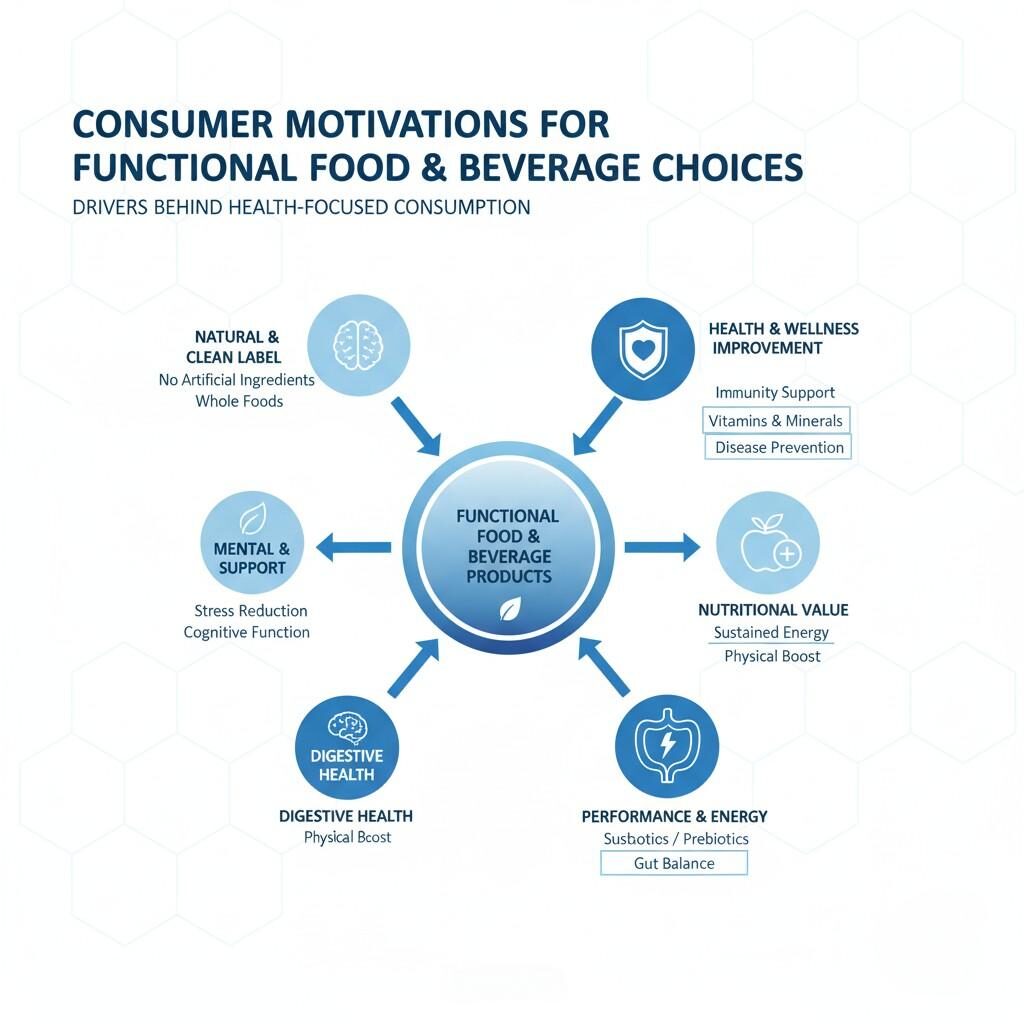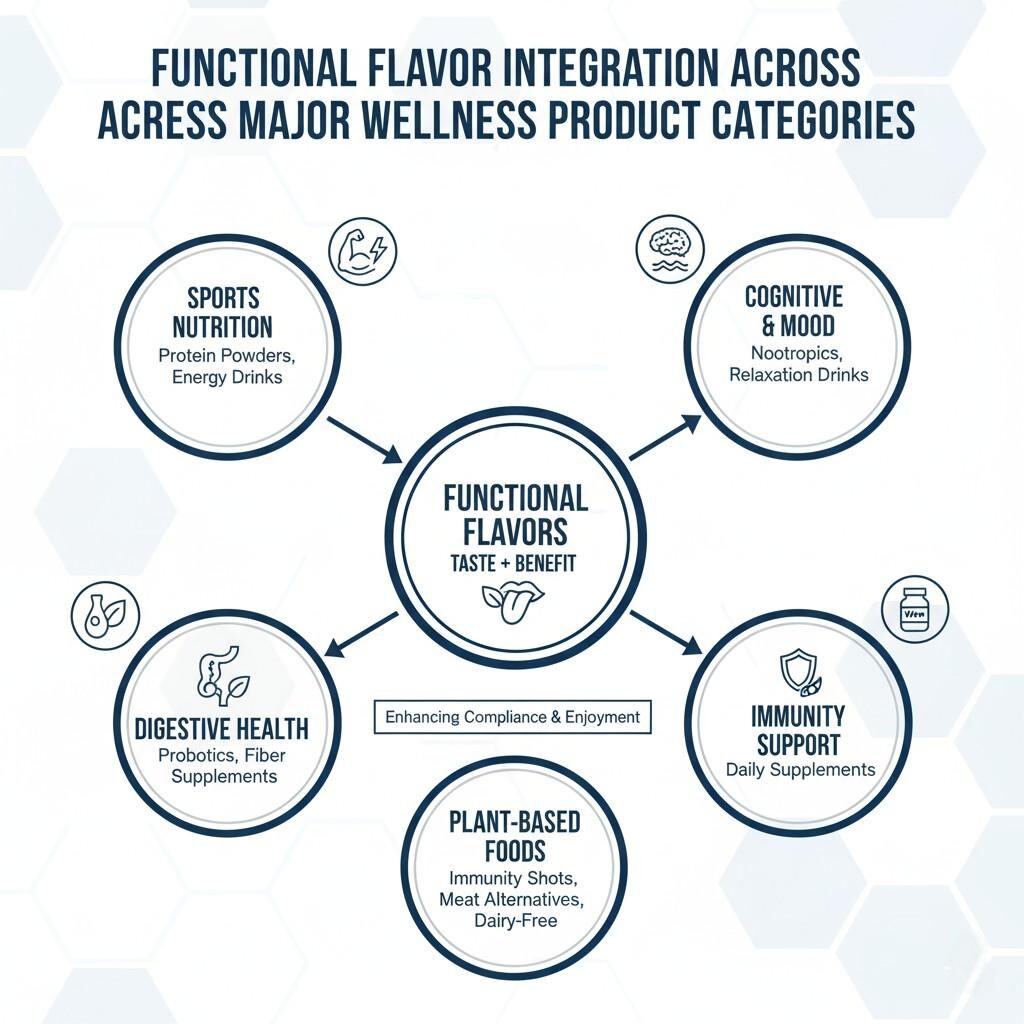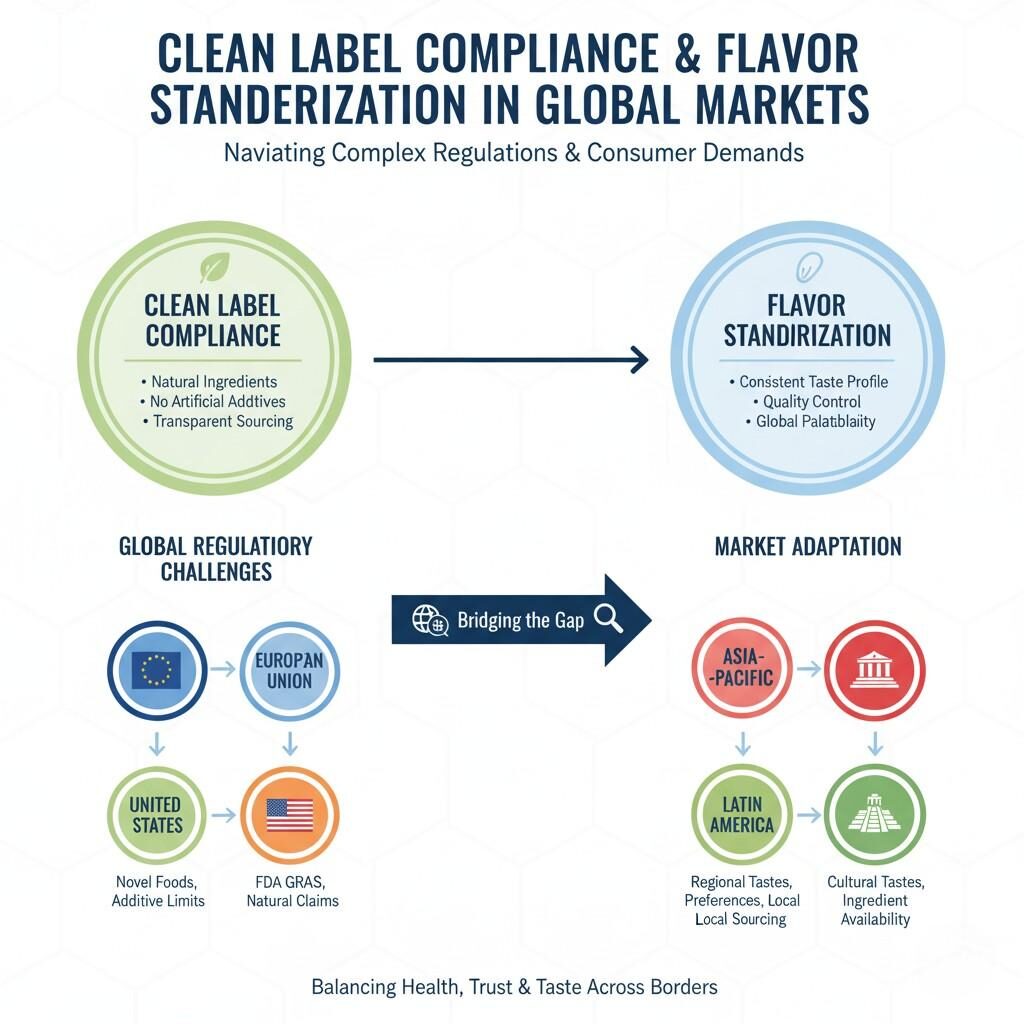Author: R&D Team, CUIGUAI Flavoring
Published by: Guangdong Unique Flavor Co., Ltd.
Last Updated: Oct 12, 2025

Flavor Function Evolution
In the past, flavor development was primarily focused on sensory pleasure—the pursuit of taste perfection that would make consumers crave more. Today, the flavor industry is witnessing a transformative shift: functional flavors have emerged as key players in the global wellness economy.
Modern consumers no longer see flavors as mere additives for sweetness or aroma. Instead, they demand flavors that align with lifestyle goals—supporting gut health, mental focus, immunity, relaxation, or energy balance. This convergence of flavor technology and functional nutrition is redefining how food, beverages, and even nutraceuticals are formulated.
This article explores how functional flavors are reshaping the health and wellness sector—from scientific development to market demand—while offering manufacturers strategic insights for innovation and brand differentiation.
Functional flavors are flavor systems designed not only to enhance taste and aroma, but also to contribute to physiological or psychological benefits.
While conventional flavorings merely improve palatability, functional flavors may:
In essence, functional flavors bridge sensory science and functional nutrition.
According to the Global Wellness Institute, the wellness market exceeded $5.6 trillion in 2023, with food and beverage innovation driving a major share of growth (Global Wellness Institute, 2024)¹.
This shift aligns with what market analysts call the “healthification of flavor”—a trend where consumers associate certain flavor notes (like citrus, ginger, or mint) with vitality and cleanliness, while others (like lavender or chamomile) signal calm and mental clarity.

Functional Food Motivations
Consumers today are not only reading nutrition facts—they’re interpreting flavor cues as indicators of product quality and health value.
In markets like North America, Europe, and East Asia, functional flavors are helping brands bridge the sensory gap created by reformulation pressures (e.g., sugar reduction or plant-based transitions).
A 2023 study from Innova Market Insights found that 73% of global consumers say they are “actively looking for foods and drinks that support long-term health goals.”²
Flavor doesn’t just stimulate the tongue—it communicates wellness through psychological association. For instance:
This flavor-language is becoming an integral part of product storytelling, where consumers connect aroma, taste, and emotional benefit.
Functional flavors often leverage bioactive molecules that deliver health or physiological effects, including:
Research from the U.S. National Institutes of Health (NIH) shows that aroma-active compounds can modulate mood and stress response by interacting with the limbic system (NIH, 2022)³.
These findings support the concept of “aromatherapeutic flavoring”—where taste and smell jointly influence both sensory pleasure and mental wellness.
Technological innovation is at the heart of functional flavor design.
Microencapsulation techniques—such as spray drying, coacervation, or cyclodextrin inclusion—are used to:
Such technologies ensure that active ingredients remain stable and effective throughout processing, storage, and consumption.
A common challenge in wellness product design is balancing functional efficacy with consumer acceptance. Many natural ingredients (like ginseng, omega-3 oils, or botanical extracts) have bitter, metallic, or earthy off-notes.
Functional flavor developers must create synergistic masking systems that:
At CUIGUAI Flavoring, for example, R&D teams use GC–MS (Gas Chromatography–Mass Spectrometry) profiling to analyze volatile compound behavior and optimize aroma balance across complex matrices such as plant-protein beverages and vitamin gummies.

Functional Flavor Integration
Functional flavors now appear across an expanding array of applications:
This segment leads the trend.
According to Statista, the global functional beverage market is projected to reach $250 billion by 2027, fueled largely by clean-label and flavor innovation (Statista, 2024)⁴.
Functional flavors help nutraceutical products achieve consumer acceptance despite strong bioactive tastes.
For example:
Plant-based yogurts, high-protein bars, and fiber snacks benefit from masking systems and natural enhancement to ensure pleasant mouthfeel without artificial sweetness.
Functional flavor systems also support sugar and sodium reduction programs by maintaining flavor impact and satisfaction through cross-modal sensory enhancement.

Clean Label & Flavor Standardization
Functional flavors must adhere to strict regulatory frameworks, especially when positioned for health-oriented claims.
Manufacturers must ensure transparency and avoid unsubstantiated disease-related or therapeutic claims, while emphasizing flavor function and wellness support within permissible limits.
Consumers expect not only functionality but also ingredient transparency. The growing demand for “natural” or “food-grade” flavor sources is pushing R&D toward plant-based and solvent-free extraction methods.
At CUIGUAI Flavoring, for instance, production standards comply with ISO 9001, FSSC 22000, and Halal/Kosher certifications, ensuring every flavor compound is traceable, compliant, and sustainable.
The future of functional flavoring will be guided by data-driven sensory science, personalized nutrition, and cross-disciplinary research.
Emerging areas include:
Researchers are exploring microbiome-friendly flavor molecules that complement gut health—bridging the gap between digestive wellness and sensory pleasure.
The next generation of functional flavors may target neurotransmitter modulation, influencing alertness, calmness, or mood via olfactory pathways.
Green chemistry and biotechnological fermentation are increasingly used to produce authentic natural flavor compounds without agricultural strain—supporting both environmental and sensory integrity.
Selecting the right partner for functional flavor development is critical. A professional food-grade flavor manufacturer brings:
CUIGUAI Flavoring has over a decade of R&D and manufacturing experience, specializing in functional, food-grade flavor systems tailored for health and wellness applications.
Our technical team collaborates closely with global brands to deliver innovative, stable, and compliant flavor solutions—transforming your health-oriented product into a sensory success.
Functional flavors mark a new era where taste meets purpose. They embody the intersection of nutrition science, sensory psychology, and technological innovation—allowing manufacturers to create products that satisfy both the body and mind.
For health and wellness brands, functional flavoring is not just an enhancement—it’s a strategic differentiator that defines brand trust, consumer loyalty, and global market growth.
Looking to develop or upgrade your functional food and beverage products?
CUIGUAI Flavoring offers custom formulation, GC–MS aroma analysis, and free sample development for qualified partners.
👉 Contact our technical team today for a consultation or sample request:
Request Free Samples / Technical Support →
📩 [info@cuiguai.com]
📞 [+86 189 2926 7983]
🌐 Explore more at 【www.cuiguai.cn】
Copyright © 2025 Guangdong Unique Flavor Co., Ltd. All Rights Reserved.